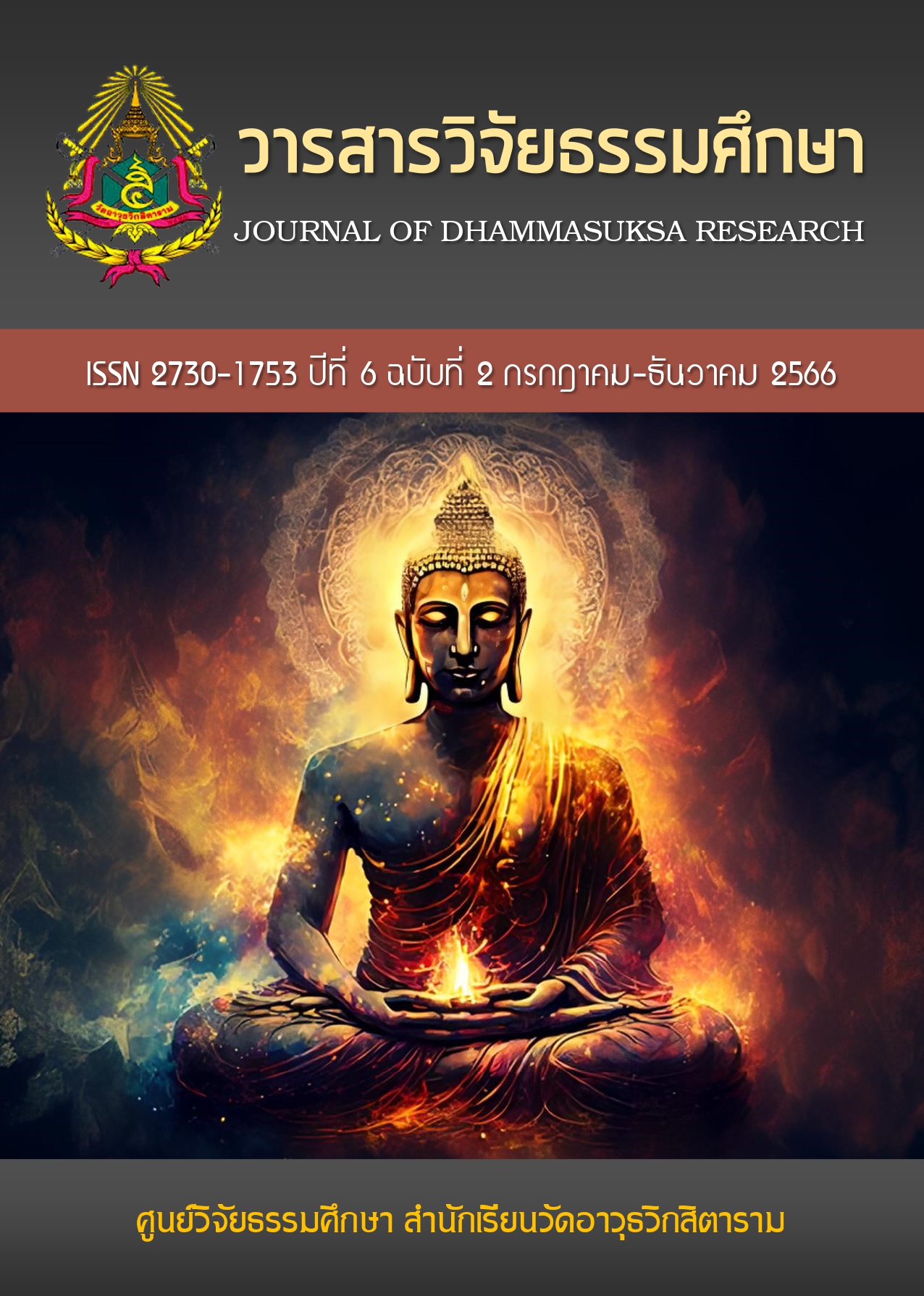The Effectiveness of Massive Open Online Course for Fine Arts Education in Universities under Liaoning Province
คำสำคัญ:
Massive Open Online Course (MOOC), Effectiveness, Education, Managementบทคัดย่อ
The objectives of this research were: (1) to examine components of the effectiveness of Massive Open Online Course for Fine Arts Education in Universities under Liaoning Province; (2) to verify the components of the Effectiveness of Massive Open Online Course for Fine Arts Education in Universities under Liaoning Province.
The research was a mixed methodology research. The population includes 54 college leaders and 426 instructors from 20 colleges and universities, with a total number of 480. Using multi-stage random sampling technology, the sample size of 300 university leaders and instructors was determined. The nine key informants were deans of art colleges, deans of academic affairs, directors of basic teaching departments of art colleges and other relevant administrators, and lecturers of relevant majors in art colleges and universities. obtained by purposive sampling method. The instruments used for data collection were semi structured interview, a five-level rating scale questionnaire, and note taking by Focus Group Discussion. Major findings: (1) Strengthen organizational management and standardize the learning management system included four components: build a learning organization in universities, establish a MOOC public education service platform, improve the construction of an evaluation system for MOOC learning performance, establish the construction, evaluation and assessment mechanisms for the improvement of MOOC for fine arts education.(2) Establish and improve the quality assurance system of MOOC education and establish a sound mechanism for MOOC development included five components: Set up a special MOOC project team , Financial security , mutual course selection and credit recognition , design and implementation and evaluation mechanisms for MOOC development , Innovate the MOOC teaching mode .(3) Organise and carry out MOOC-based education and teaching reforms within the university, and comprehensively integrate education resources integration included five components: settings of teaching institutions, policy suppor, educational management links, educational resources, teaching reform and research. (4) Develop a management system in line with MOOC Features to promote the construction of MOOCs in universities included seven components: the convenience of MOOC learning, the construction of an evaluation system for MOOC learning performance, management support and supervision of MOOCs, the platform's service-oriented functions, online and offline hybrid teaching, MOOC promotion strategy, the fairness of MOOC learning, (5) Optimise Learning Platform Management included four components: infrastructure construction plans, the timeliness of the MOOC platform, eal-time updating of courses andin-depth development, MOOC platform should own style and paradigm, teaching on the platform. (6) Strengthen Platform Education Quality Assurance and promote Platform Education Quality enhancement included four components: a sound quality assurance mechanism for Platform Education, a credit conversion mechanism, and a mechanism for mutual recognition of credits, students' personalised learning management, adapt various functions and features to the learners' way of thinking, a dynamic MOOC teaching quality evaluation system.
เอกสารอ้างอิง
chen Ling. (2019). Usability Research of Learning Analytics and Evaluation of. MOOC Platform. China Academic Journal Electronic Publishing House.
Jemni, M., Kinshuk & Khribi, M.K. (2016: 269-270). Open Education: from OERs to. MOOCs. Springer Berlin, Heidelberg.
Miller, T. (2010). Social Media Literacies and Perceptions of Value in Open Online. Courses Bonnie Stewart. Social Media Literacies and Perceptions of Value
Mingzhuo Liu, Shenghua Zha, & Wu He. (2019). Digital Transformation Challenges: a. Case Study Regarding the MOOC Development and Operations at Higher Education Institutions in China. Original Paper.
Sangeeta Trehan, Janesh Sanzgiri and Chenxi Li, Rongsheng Wang Rakesh Mohan Joshi. (2017). Critical discussions on the Massive Open Online Course (MOOC) in India and China. International Journal of Education and Development using Information and Communication Technology.
Shi Jinghuan, Liu Lulu. (2021:1-9). A shift in perspective worthy of attention in university evaluation. Journal of Hebei Normal University (Education Science Edition)
Tim O’Riordana, David E. Millarda and John Schulz. (2016). How should we measure. online learning activity? Research in Learning Technology.
Wang Deji, Feng Yingying, Wang Ying. (2014). The Cold Thinking Behind the MOOC Craze. Educational Research.
Yuan Luqi. (2018). The study of MOOC teaching management in university. China. Academic Journal Electronic Publishing House.
Zhao Lei. (2017). Research on the Innovation Diffusi on Motivation and Paths of. MOOCs of Universities. Dalian University of Technology.
ดาวน์โหลด
เผยแพร่แล้ว
รูปแบบการอ้างอิง
ฉบับ
ประเภทบทความ
หมวดหมู่
สัญญาอนุญาต
ลิขสิทธิ์ (c) 2023 วารสารวิจัยธรรมศึกษา

อนุญาตภายใต้เงื่อนไข Creative Commons Attribution-NonCommercial-NoDerivatives 4.0 International License.



